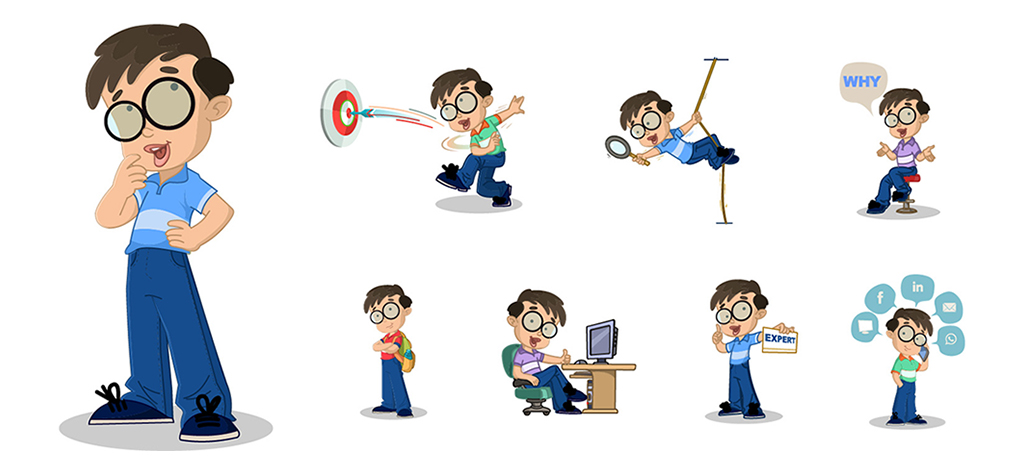If you are a 90s kid, you would definitely remember the ‘BOOM BOOM BOOMER’ tune and the super stretchy Boomer Man. The Brand Mascot that grabbed the attention of children who thought that he was no less than a saviour of the planet.
Some brands became popular because of their tagline, some become memorable because of a catchy jingle, some are simply loved for their product, and then there are those brands that gained traction because of their mascot. Since ages brand mascots have made brands more endearing, be the AMUL girl, the Lijjat Papad rabbit, Asian Paints’ Gattu, Air India’ Maharaja, or internationally famous, McDonald’s Ronald Mc Donald, Frito lay’s Chester Cheetah, Michelin Man, Mr. Clean, Pillsbury Doughboy, 7up’s Fido Dido or KFC’s Colonel Harland Sanders.
They are timeless:
There is no better example of a timeless mascot than the AMUL girl. With her witty take on the topical happenings, she tops the charts of the most loved brand mascots in India. Since 1966, the Amul girl has stood the test of time, but she remains just as fresh as she was on the day of her birth. Once you invest in creating a brand mascot, you need to ensure they are kept fresh, relevant and engaging; and this requires a lot of time, commitment and investment. But once it has been placed well, it leads to instant loyalty and memorability.
A big investment:
Although brand marketers agree that brand mascots are an incredibly valuable asset, but usage of brand mascots has gone down. They say there are two reasons to this; one is that no one is willing to take the risk as brands want to follow the on-going pattern. Second, one has to invest not just in terms of money and time, but it is a long-term investment in terms of creative capabilities too.
They aren’t for every business:
Brand Mascots are memorable and highly recognisable, but they aren’t the right choice for all brands. If you look at usage of brand mascots over the years, you will notice that mascots have been popular with food brands. Since they are mainly associated with personalities such as non-serious, fun, cute and lovable, brand mascots have not been chosen by premium or luxury products nor by various high-involvement categories. Other major industries that have benefitted with a mascot are tech companies (Android’s Bugdroid), financial services companies (ICICI Prudential Bank’s Chintamani), cement companies (Ambuja Cement’s Giant Mascot), housekeeping brands (Mr. Muscle), amongst others.
Versus Brand Ambassadors:
Celebrities create quick awareness about brands, however they charge a hefty amount and are subjected to risk; with time the image of the celebrity may change, which in return may or may not fit with the brand image. Also there is a great chance of a brand being lost in the clutter while using a celebrity who endorses multiple brands. Mascots on the other hand have to be built, invested into and take time to become a powerful and exclusive property.
But at the end, both are not necessarily interchangeable. They have a unique role that they can play in the life of a brand. While certain categories, including food and kid’s categories, work wonders with mascots, others, like beauty or high-end products, work extremely well with celebrities.
How Marshmallow got its Mascot?
Mascots add personality to a brand and personify it. Also, they convey the brand messages in a compelling way. We loved the fact that a mascot could be omnipresent and immortal. And hence the journey to bring to life a mascot that embodies within himself our DNA began.
It all began with a brainstorming session, where each employee defined the Marshmallow personality and the characteristics that they felt were highly important to be present in the mascot. We zeroed in on these personality traits: curious, thinker, ingenious, insightful, fun-loving, naughty, observant, jovial, adventurous, helpful, honest, trust-worthy, resourceful, multi-tasker, confident and active.
Once we knew the basic characteristics, we went on to define its gender and age. Majority of them agreed to the character being young man who was aged between 15-20 years. In fact, we even found a movie character that could closely define what we were looking for in a mascot. We connected really well with Macaulay Culkin of Home Alone. He is an exceptionally brilliant kid, who is smart, curious, confident, and ingenious along with being funny and naughty.
Once we had defined the personality of the mascot, all we now needed was to personify it. We were sure we didn’t want a very ‘office wear’ kinda mascot. He had to have a smart dressing sense that was casual and comfortable. Our mascot was thence created and now features on all our communications, be it internal or external branding.

He is witty. He is intelligent. He is a team-player. He is resourceful. He is fun. He is Marshmallow.
